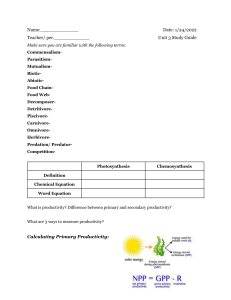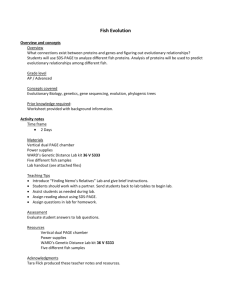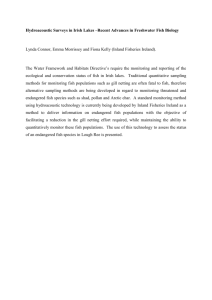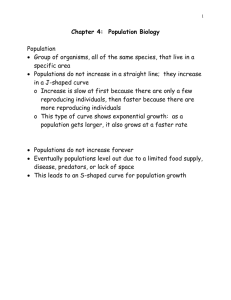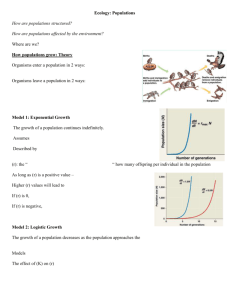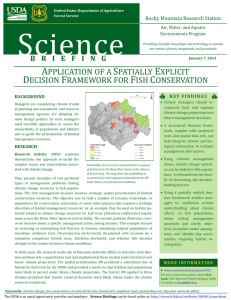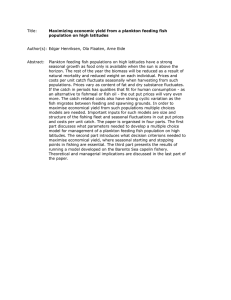Eco-genetic models for understanding, predicting, and managing
advertisement
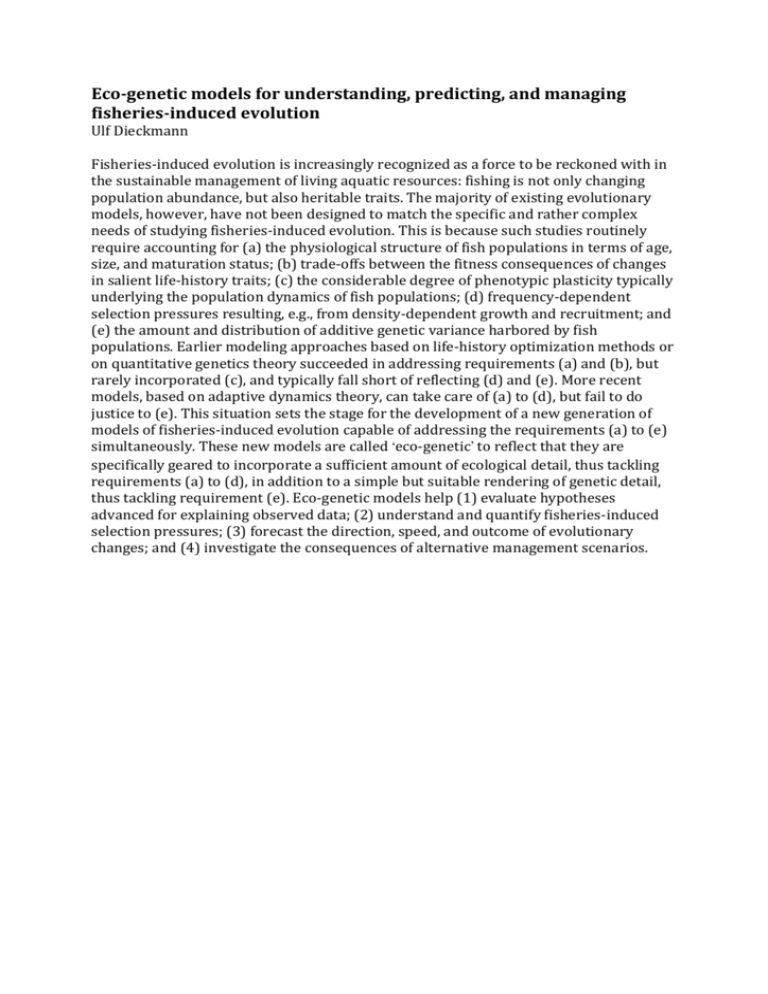
Eco-genetic models for understanding, predicting, and managing fisheries-induced evolution Ulf Dieckmann Fisheries-induced evolution is increasingly recognized as a force to be reckoned with in the sustainable management of living aquatic resources: fishing is not only changing population abundance, but also heritable traits. The majority of existing evolutionary models, however, have not been designed to match the specific and rather complex needs of studying fisheries-induced evolution. This is because such studies routinely require accounting for (a) the physiological structure of fish populations in terms of age, size, and maturation status; (b) trade-offs between the fitness consequences of changes in salient life-history traits; (c) the considerable degree of phenotypic plasticity typically underlying the population dynamics of fish populations; (d) frequency-dependent selection pressures resulting, e.g., from density-dependent growth and recruitment; and (e) the amount and distribution of additive genetic variance harbored by fish populations. Earlier modeling approaches based on life-history optimization methods or on quantitative genetics theory succeeded in addressing requirements (a) and (b), but rarely incorporated (c), and typically fall short of reflecting (d) and (e). More recent models, based on adaptive dynamics theory, can take care of (a) to (d), but fail to do justice to (e). This situation sets the stage for the development of a new generation of models of fisheries-induced evolution capable of addressing the requirements (a) to (e) simultaneously. These new models are called eco-genetic to reflect that they are specifically geared to incorporate a sufficient amount of ecological detail, thus tackling requirements (a) to (d), in addition to a simple but suitable rendering of genetic detail, thus tackling requirement (e). Eco-genetic models help (1) evaluate hypotheses advanced for explaining observed data; (2) understand and quantify fisheries-induced selection pressures; (3) forecast the direction, speed, and outcome of evolutionary changes; and (4) investigate the consequences of alternative management scenarios.


